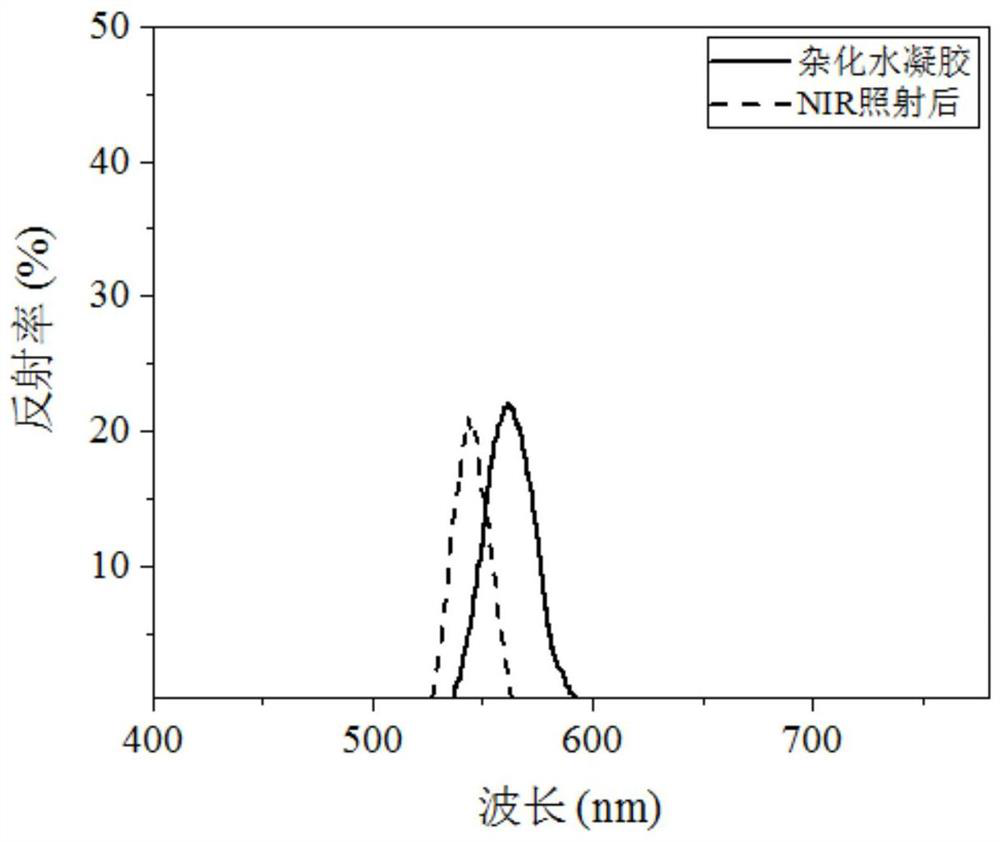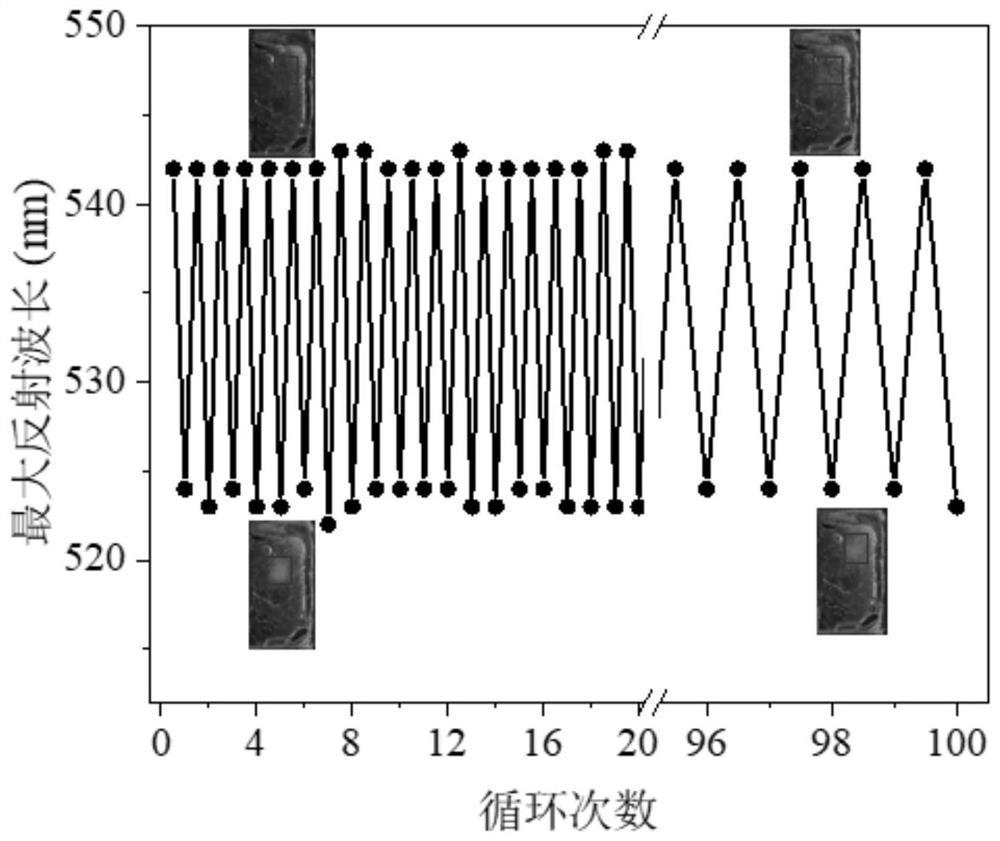Near-infrared detection colorimetric sensor as well as preparation method and application thereof
A colorimetric sensor and near-infrared detection technology, which is applied in the field of nanomaterials and functional polymer materials, can solve the problems of influence, loss of photothermal effect, destruction, etc., and achieve excellent stability
- Summary
- Abstract
- Description
- Claims
- Application Information
AI Technical Summary
Problems solved by technology
Method used
Image
Examples
Embodiment 1
[0042] Example 1 Preparation of PEG-thiol-Au NRs
[0043] (1) CTAB stable gold nanorods:
[0044] Combine 365mg CTAB, 10mL H 2 O and 100μL HAuCl 4 The solution (25mM) is mixed and stirred vigorously at room temperature (> 1200rpm); then, add 0.6mL NaBH 4 The ice water solution (10mM) was quickly added to the above mixture solution, stirred for 2 minutes, and aged for 2 hours to obtain the gold seed solution;
[0045] Then grow gold nanorods: first dissolve 3.65g CTAB in 100mL water and then add 0.8mL silver nitrate solution (10mM), 0.2mL hydrochloric acid (1M), 2.0mL chloroauric acid solution (25mM) and 0.7mL ascorbic acid (78.8mM). ), after stirring the above solution for 30 seconds, quickly add 120 μL of gold seed solution. The mixture was stirred for 30 seconds, and then held at 29°C overnight. After centrifugation at 9000 rpm for 10 minutes, the collected solids were dispersed in 5 mL of ultrapure water to obtain a gold nanorod dispersion with a CTAB stable aspect ratio of 5.
...
Embodiment 2
[0051] Example 2 Preparation of near-infrared detection colorimetric sensor
[0052] (1) Preparation of polystyrene photonic crystals:
[0053] Photonic crystals are prepared by vertically depositing polystyrene colloid on a glass substrate. The cleaned glass substrate was placed vertically in a polystyrene colloidal suspension with a diameter of 194 nm at a concentration of 0.15 wt%. Then, by placing the reaction system in a constant temperature and humidity cabinet (50° C. and 60% relative humidity) for 24 hours, a glass plate on which photonic crystals were grown was prepared.
[0054] (2) Preparation of colorimetric sensor for near infrared detection:
[0055] Disperse 0.08mL PEG-thiol-Au NRs in 0.32mL prepolymer solution (N-isopropylacrylamide: acrylamide ratio is 90:10) and stir for 30min, and then cover the glass plate with photonic crystals. Layer glass plate, clamped and immersed in the mixed solution, the mixed solution is immersed by the capillary force generated by the g...
Embodiment 3
[0058] Example 3 Detection of near-infrared light by near-infrared detection colorimetric sensor
[0059] The near-infrared detection colorimetric sensor prepared from the prepolymerized solution of N-isopropyl acrylamide: acrylamide ratio of 90:10 was placed under a micro-fiber spectrometer to measure its reflection spectrum, and then irradiated with near-infrared light (2W). After 3 seconds, a significant blue shift (17nm) occurs at the maximum reflection wavelength, such as figure 2 .
[0060] Table 1 Composition and responsiveness of near-infrared response colorimetric sensors
[0061]
[0062]
PUM
 Login to View More
Login to View More Abstract
Description
Claims
Application Information
 Login to View More
Login to View More - R&D
- Intellectual Property
- Life Sciences
- Materials
- Tech Scout
- Unparalleled Data Quality
- Higher Quality Content
- 60% Fewer Hallucinations
Browse by: Latest US Patents, China's latest patents, Technical Efficacy Thesaurus, Application Domain, Technology Topic, Popular Technical Reports.
© 2025 PatSnap. All rights reserved.Legal|Privacy policy|Modern Slavery Act Transparency Statement|Sitemap|About US| Contact US: help@patsnap.com



